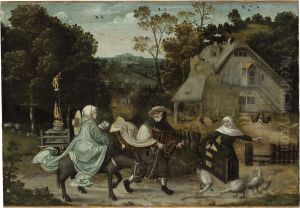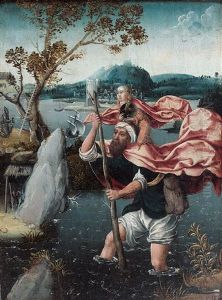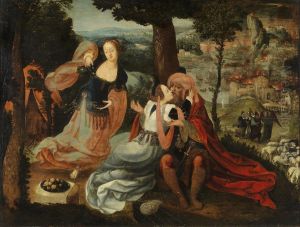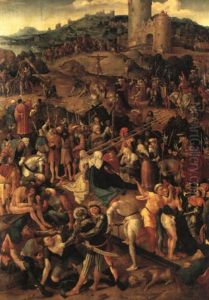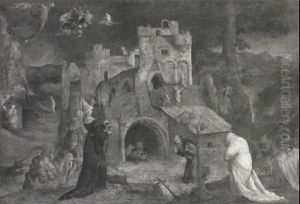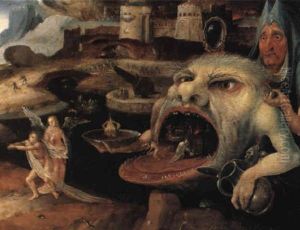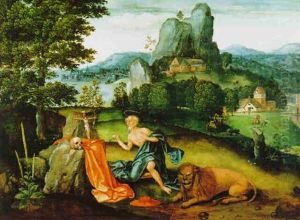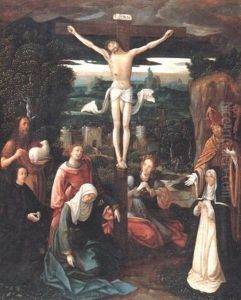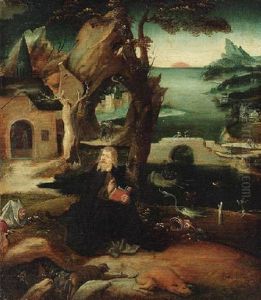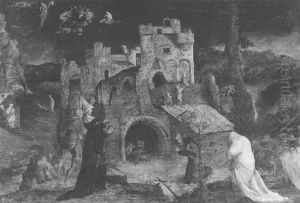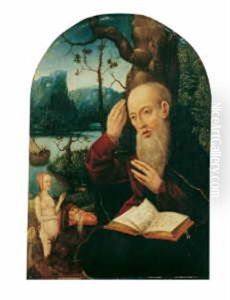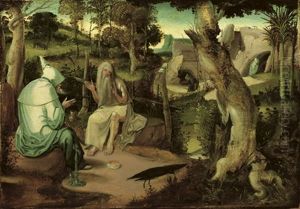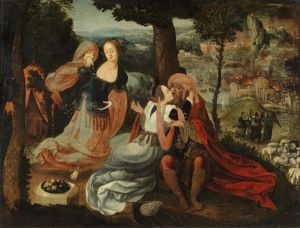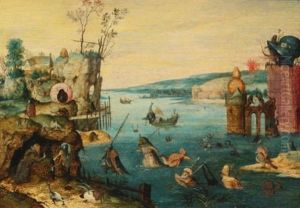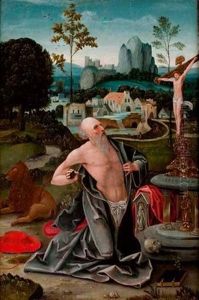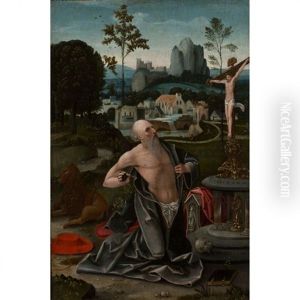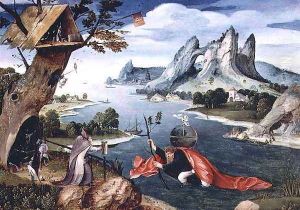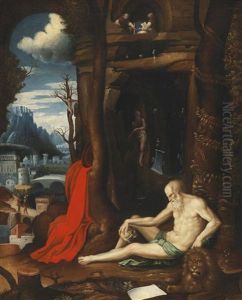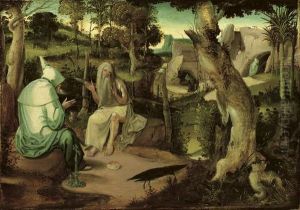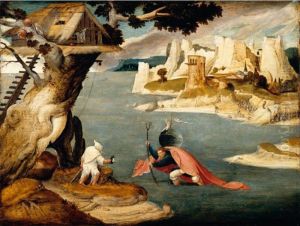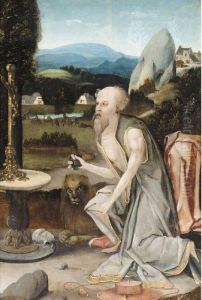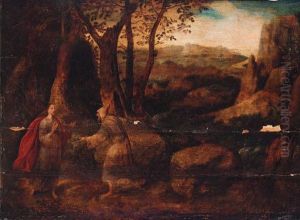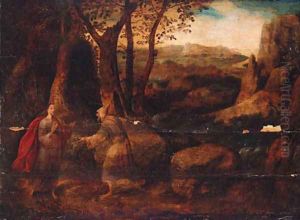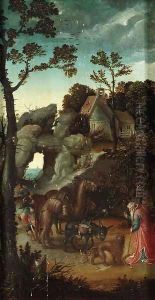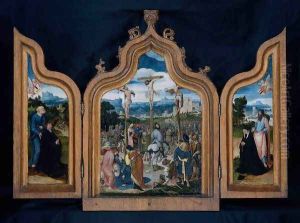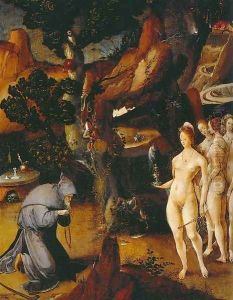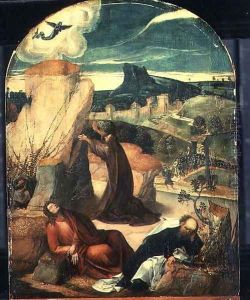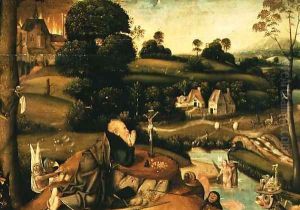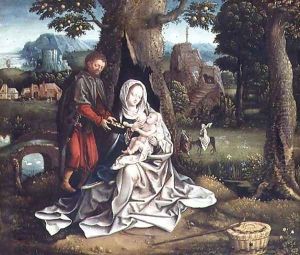Jan Wellens de Cock Paintings
Jan Wellens de Cock was a significant Flemish painter and draftsman belonging to the Northern Renaissance, active mainly in Antwerp. His exact birth date is not precisely known, but it's estimated around the late 15th century, circa 1470 to 1480. He passed away in 1527. De Cock was a contemporary of other notable artists like Quentin Matsys, with whom he shares the distinction of contributing to the development of Antwerp as a major center for art in the 16th century.
Jan Wellens de Cock is particularly known for his religious compositions, landscape paintings, and intricate triptychs, which often featured detailed renderings of biblical and mythological scenes. He was adept at blending intricate detail with a keen sense of spatial composition, which allowed his works to convey profound religious and moral messages effectively. His style is characterized by the use of vivid colors, meticulous detail, and the dynamic composition that was influential in the development of Flemish painting.
Despite his significant contributions, much of Jan Wellens de Cock's life and work remained overshadowed by the achievements of later Flemish masters. However, his influence was noteworthy among his contemporaries and in the evolution of the Antwerp school of painting. De Cock was also known for his etchings and engravings, which helped disseminate his style and the Flemish pictorial tradition throughout Europe.
Records indicate that he was married to Clara van der Hecke, and their son, Hieronymus Cock, would later become a prominent publisher and printmaker, further indicating the artistic lineage and influence of the Cock family in the Flemish art world.
Jan Wellens de Cock's legacy is preserved in various European art collections, where his works continue to be studied and admired for their contribution to the Northern Renaissance art movement. Despite the scarcity of biographical details, his surviving works attest to a masterful artist who played a crucial role in the rich tapestry of Flemish art history.
